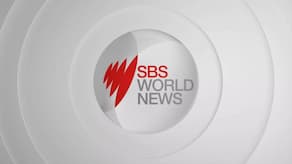Key Points
- The base JobSeeker rate is due to rise $56 a fortnight.
- Other forms of welfare are being considered for a bump.
- Rishworth said high inflation will be taken into consideration for such increases.
Australians on JobSeeker can expect a bump in their payments as the cost of living rises, but other welfare recipients will need to wait to find out what's happening with their incomes.
The JobSeeker rate is indexed twice a year based on inflation, but in September the payment is due to increase by another $40 after a budget boost to the base rate.
Including a six-monthly indexation increase of 2.2 per cent, the base JobSeeker rate is due to rise by $56 a fortnight if parliament passes welfare changes announced in the May budget.
How about other welfare payments?
But those on other forms of welfare like the single-parenting income will have to wait to see how their payments are updated as cost-of-living pressures continue to bite.
"Some of the other measures like the pension and single parent payment has a choice of indexation measures," Social Services Minister Amanda Rishworth told ABC's Insiders on Sunday.
"So we've got to work through those."
Rishworth said high inflation was playing into the considerations but any moves had to be balanced against budget pressures and adding to inflationary pressures.
Older people eligible for higher JobSeeker payments are due to receive up to $109 more per fortnight from September under the changes.
The government is under pressure from the social sector to increase welfare payments and unveil new cost-of-living assistance measures after a better-than-expected budget bottom line.
Impact of budget surplus
The budget is expected to come in more than $20 billion in the black for the last financial year, but the treasurer will bank most of the money citing structural pressures on the public purse.
Rishworth said the projected surplus was only temporary and welfare increases had to be balanced against the budget's long-term health.
The minister said measures the government has already announced met that balance.
"The changes we're making - whether it's to rent assistance, JobSeeker - are structural changes, they're ongoing increases that will be applied," she said.
"So when you talk about the surplus from last year, that's a very different circumstance to the reforms that we've made which are ongoing.
"We have calibrated these to be responsible to help people that are doing it tough, but also, that they're sustainable into the long-term."





